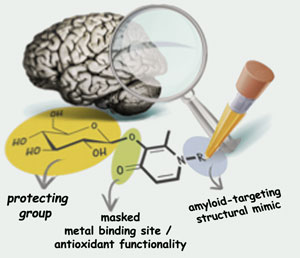A new treatment for Alzheimer’s disease has been developed by Canadian and US scientists.
Chris Orvig at the University of British Columbia, Canada, and colleagues incorporated a thioflavin dye molecule with pyridinones. The dye is used as a marker for detecting amyloid protein deposits in tissues – a sign of neurodegenerative disease – and pyridinones cross the blood-brain barrier and trap the metal ions that cause the Alzheimer’s disease.

Read the full news story in Chemistry World and download Orvig’s Chemical Science Edge article for free.
——-
Wonwoo Nam is the new Chemical Science Associate Editor for bioinorganic chemistry. Submit your bioinorganic research to his editorial office to be seen with the best.
——-










